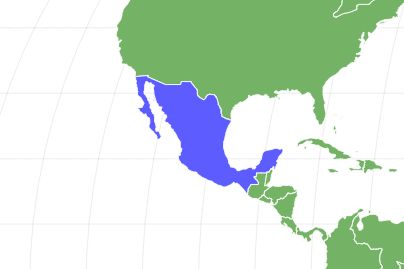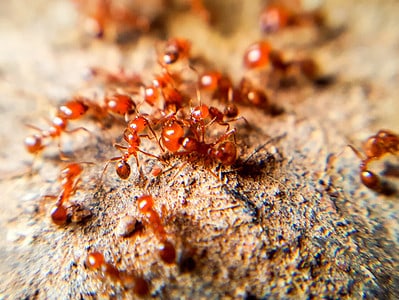Pine Beetle
Dendroctonus ponderosae
Female pine beetles can lay up to 75 eggs at once, and the males will stay with their mates for up to 3 weeks after fertilizing the eggs
Advertisement
Pine Beetle Scientific Classification
- Kingdom
- Animalia
- Phylum
- Arthropoda
- Class
- Insecta
- Order
- Coleoptera
- Family
- Curculionidae
- Genus
- Dendroctonus
- Scientific Name
- Dendroctonus ponderosae
Read our Complete Guide to Classification of Animals.
Pine Beetle Conservation Status
Pine Beetle Facts
- Name Of Young
- Larvae
- Group Behavior
- Infestation
- Fun Fact
- Female pine beetles can lay up to 75 eggs at once, and the males will stay with their mates for up to 3 weeks after fertilizing the eggs
- Most Distinctive Feature
- Shiny black exoskeleton
- Other Name(s)
- Bark beetle
- Average Spawn Size
- 75
- Habitat
- Pine forests
- Diet
- Herbivore
- Lifestyle
- Nocturnal
- Favorite Food
- Phloem
- Common Name
- Pine beetle
- Origin
- North America
- Number Of Species
- 599
- Location
- North America and Mexico
View all of the Pine Beetle images!
The pine beetle is often referred to as the bark beetle, and they belong to the family Curculionidae. Their most distinguishing feature is their black exoskeletons. They are considered pests in North American forests because of their ability to destroy trees.
Pine beetles have a symbiotic relationship with yeasts (a type of fungus) as it helps with digestion and pheromone production.
There are around 18 species of bark beetles, and they belong to the subfamily Scolytinae. This subfamily consists of 600 species and 247 genera. Most members of Scolytinae feed on phloem or the inner layer of bark, hence the name bark beetle.
In addition, they regularly feed on wood, fruits, seeds, and herbaceous plants. Other names for beetles belonging to the Curculionidae family are true weevils and snout beetles.
Pine Beetle Species, Types, and Scientific Name
There are around 600 species of pine beetles, but the most popular are:
- Roundheaded pine beetle
- Western pine beetle
- Jeffrey pine beetle
- Lodgepole pine beetle
- Mountain pine beetle
- Black pine bug
Their scientific name is Dendroctonus ponderosae, and they belong to the order Coleoptera. Out of all the orders in the class Insecta, this one is the largest, with over 250,000 species.
So, there is a vast difference between species when it comes to biology, size, behavior, and morphological characters. However, some similar features are a pair of membranous hind wings on the rear and a couple of elytra on the front of their bodies. Elytra are hardened wings that cover most of their abdomen.
These beetles are very adaptable and occur in numerous habitats ranging from deserts to aquatic systems. In addition, they feed on various animal materials and plants.
Pine beetles are members of the family Curculionidae. Their most distinguishing characteristic is their snouts, which are either long and slender or short and wide.
Their mouthparts are small and can barely be seen at the ends of the snout. The antennae sit on the sides of the beak, and their elongated heads lean forward to fit perfectly into the snout. They are also known for their tarsi, which is separated into five segments.
These beetles have a unique defense mechanism. They sing by rubbing their front wings (elytra) against their abdomens.
The pine beetles larvae are white and can also be referred to as grub. They burrow into large nuts and twigs.
Appearance: How To Identify the Pine Beetle
Pine beetles are black in color and have a cylindrical shape. While their black, shiny shell is one of their most identifiable features, another distinguishing characteristic is their curved hind wings, which are covered in sharp spines.
Their eggs are white in color, and the larvae hatch with white bodies and brown heads. In addition, they are legless and live in pine trees while they go through their stages of development. These beetles are only half the size of tiger beetles and measure 0.25 inches in length.
Habitat: Where to Find the Pine Beetle
The pine beetle is true to its name and lives in pine forests, including Pinus trees and ponderosa pines. Although this species is highly adaptable to high altitudes, they prefer lower altitudes with moderate temperatures.
Their life history suggests they used to steer clear of cold temperatures because they couldn’t survive the cold. However, with global warming, the winters don’t affect them as much as they used to, which is causing significant damage in previously unaffected areas.
They tend to infest weaker trees that are suffering from disease, injury, overcrowding, old age, and fire damage. However, if pine beetles are abundant in one area, they will infest healthy trees in the surrounding area.
Because of this behavior, pinus trees are severely affected, and it’s detrimental to the forest ecosystem. In addition, they inhabit:
- Limber pines
- Ponderosa pines
- Scots pines
- Whitebark pines
- Jack pines
- Lodgepole pines
Diet: What Do Pine Beetles Eat?
The pine beetle larvae eat the phloem of the tree they live in and feed in perpendicular lines. Once they are adults, they start to feed on tree tissues and fungal spores made by other beetle species in the same tree. In addition, their diet also consists of the inner bark found in trees like lodgepole pines.
Life Cycle of the Pine Beetle
When the pupae develop into adults, the females will fly to Pinus trees, where they mate and lay their eggs. First, they build a nest or egg gallery by burrowing through the tree’s bark into the phloem.
To attract a mate, female pine beetles release pheromones. Once the males arrive, they too secrete a pheromone which initiates infestation. Surprisingly, males choose a mate based on the size of the egg gallery in the tree; the bigger, the better.
Female pine beetles can lay up to 75 eggs at once, and the males will stay with their mates for up to 3 weeks after fertilizing the eggs. Then, after around 10 to 14 days, the eggs start to hatch. Although both parents stay with the larvae after they hatch, they are not maternal.
The larvae hatch in warmer moths inside the tree leaves, usually around July or August. Adults don’t live long, generally up to one year.
Prevention: How to Get Rid of the Pine Beetle
Typically fumigating pine trees once a year helps for preventing infestations. This is vital in regions with known activity. However, this is only a preventative measure. If you do have an active infestation of pine beetles, there is only one way to deal with it.
Trees have to be chipped, cut, or entirely de-barked at once! While very labor intensive, it eliminates 100% of the beetles.
The most reasonable solution that keeps the trees on site is cutting the infested pine tree down and chopping the log into 2 ft lengths. These pieces should be left exposed and not stacked. By doing this, the sun will dry the inner bark tissue, and the beetles inside will die.
Up Next
View all 192 animals that start with PPine Beetle FAQs (Frequently Asked Questions)
Is the pine beetle still a problem in BC?
Yes, a plague of tiny pine beetles, no bigger than a grain of rice, has already destroyed 15 years of log supplies in British Columbia.
Are pine beetles native to Canada?
Yes, pine beetles are native to Canada.
Can a tree recover from pine beetles?
No, unfortunately, the tree is not salvageable, and will need to be chopped down.
Thank you for reading! Have some feedback for us? Contact the AZ Animals editorial team.
Sources
- Bug Spray, Available here: https://bugspray.com/article/pinebark.html
- Wikipedia, Available here: https://en.wikipedia.org/wiki/Mountain_pine_beetle
- Kidadl, Available here: https://kidadl.com/facts/animals/mountain-pine-beetle-facts
















